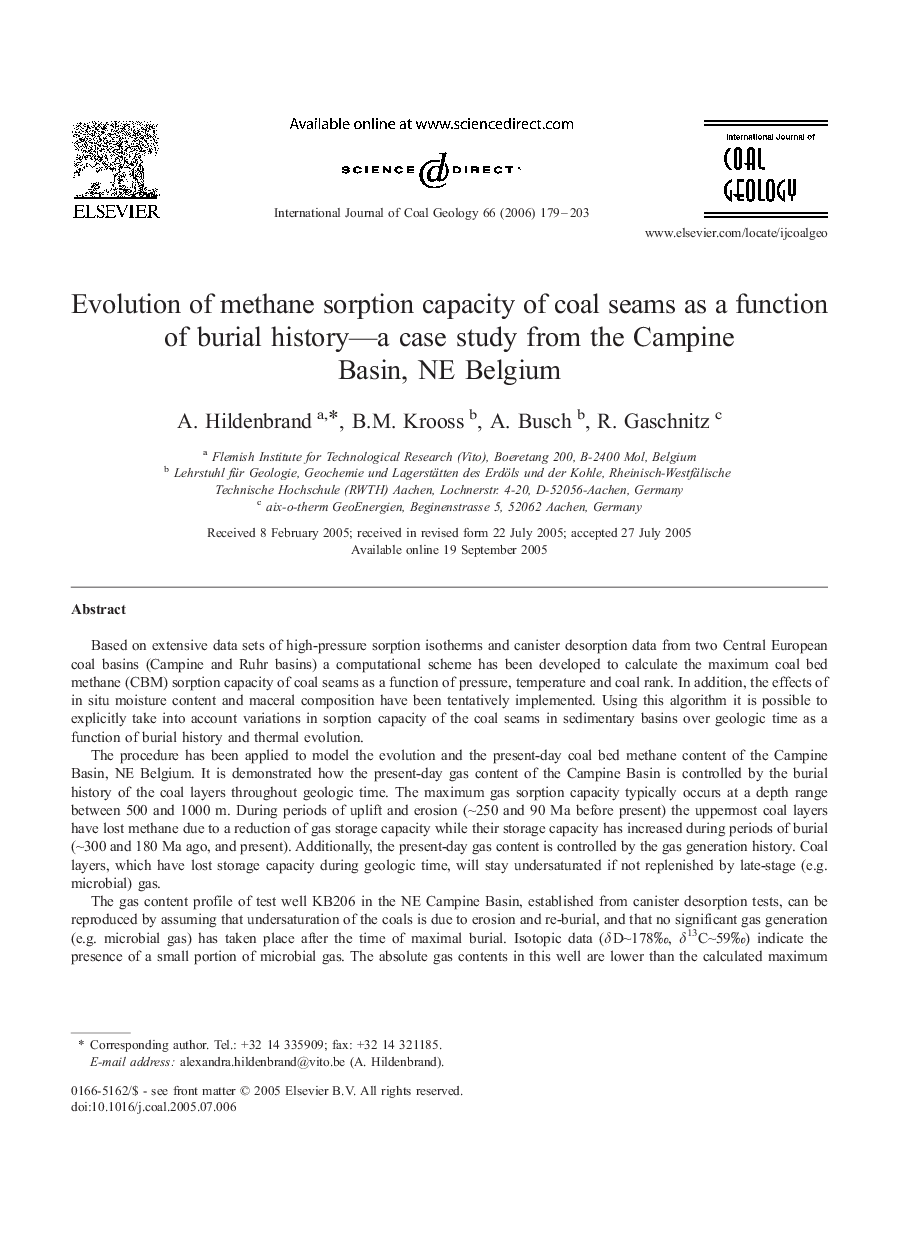| کد مقاله | کد نشریه | سال انتشار | مقاله انگلیسی | نسخه تمام متن |
|---|---|---|---|---|
| 1754379 | 1522670 | 2006 | 25 صفحه PDF | دانلود رایگان |

Based on extensive data sets of high-pressure sorption isotherms and canister desorption data from two Central European coal basins (Campine and Ruhr basins) a computational scheme has been developed to calculate the maximum coal bed methane (CBM) sorption capacity of coal seams as a function of pressure, temperature and coal rank. In addition, the effects of in situ moisture content and maceral composition have been tentatively implemented. Using this algorithm it is possible to explicitly take into account variations in sorption capacity of the coal seams in sedimentary basins over geologic time as a function of burial history and thermal evolution.The procedure has been applied to model the evolution and the present-day coal bed methane content of the Campine Basin, NE Belgium. It is demonstrated how the present-day gas content of the Campine Basin is controlled by the burial history of the coal layers throughout geologic time. The maximum gas sorption capacity typically occurs at a depth range between 500 and 1000 m. During periods of uplift and erosion (∼250 and 90 Ma before present) the uppermost coal layers have lost methane due to a reduction of gas storage capacity while their storage capacity has increased during periods of burial (∼300 and 180 Ma ago, and present). Additionally, the present-day gas content is controlled by the gas generation history. Coal layers, which have lost storage capacity during geologic time, will stay undersaturated if not replenished by late-stage (e.g. microbial) gas.The gas content profile of test well KB206 in the NE Campine Basin, established from canister desorption tests, can be reproduced by assuming that undersaturation of the coals is due to erosion and re-burial, and that no significant gas generation (e.g. microbial gas) has taken place after the time of maximal burial. Isotopic data (δD∼178‰, δ13C∼59‰) indicate the presence of a small portion of microbial gas. The absolute gas contents in this well are lower than the calculated maximum present-day sorption capacity. This may be due to an underestimation of the effect of water content on sorption capacity or result from degassing via nearby faults, enforced by fluid circulation.
Journal: International Journal of Coal Geology - Volume 66, Issue 3, 3 March 2006, Pages 179–203